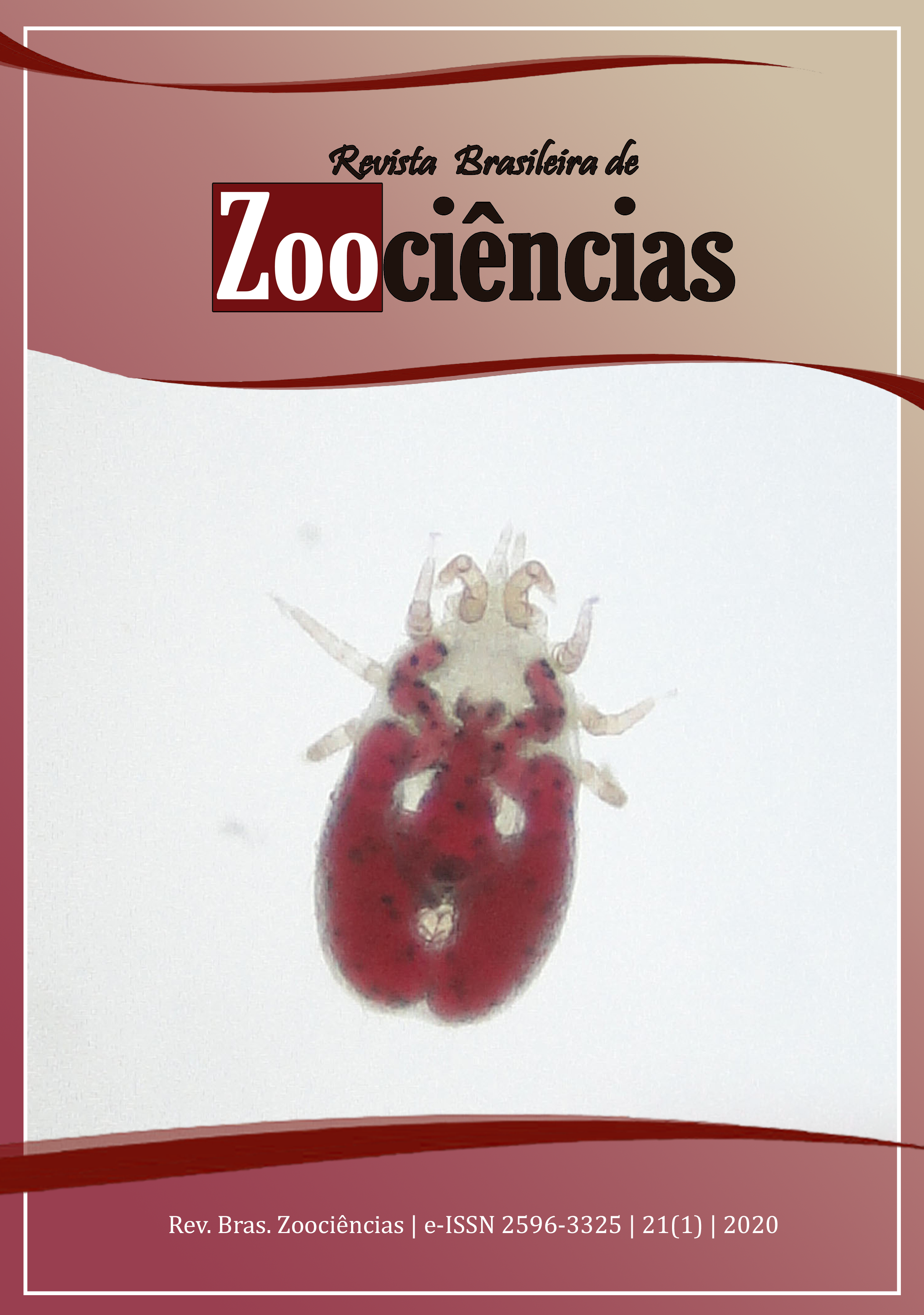Mites Macronyssidae Parasites of Passer domesticus (Linnaeus, 1758) (Passeriformes: Passeridae) in the Southern of Brazil
DOI:
https://doi.org/10.34019/2596-3325.2020.v21.28893Palavras-chave:
Haematophagous mites, House sparrows, Ornithonyssus, Parasitological indices, PellonyssusResumo
The aim of this study was to report the species of haematophagous parasitic mites of Passer domesticus (Linnaeus, 1758) and analyze the infestation rates regarding to gender, body mass, and total length of the hosts. To do so, each of the 100 house sparrows captured in the urban area of Pelotas, Rio Grande do Sul, Brazil, was identified by gender, weighed, and measured. The mite collection was carried out after applying an ectoparasite-repelling talc in the body of the birds. Pellonyssus reedi was found in 29 house sparrows with mean intensity of 8.37 mites/host and Ornithonyssus bursa was found in two birds, only one male host showing co-infestation. The prevalence and mean intensity of P. reedi between male and female adults did not show significant difference, nor was there any correlation among species abundance, body mass, and total length of the house sparrows. We report the occurrence of P. reedi and O. bursa parasitizing P. domesticus in the southern of Brazil.



